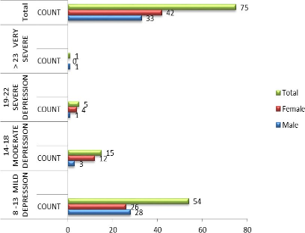Abstract
Cellphone technology has tremendously grown in its market and uses in the last decade. But it's overutilization has led to the development of new problems also. Objectionable cellphone use can be accounted for in the form of technological addiction, which can develop depression, anxiety, and other health problems. Depression is the third leading cause of global disease burden if it continues; by 2030, it will become the leading cause of disease burden. Stress or addiction can lead to the development of psychiatric disorders or vice versa. These stressors lead to the neuroinflammatory response, resulting in an exaggerated response to subsequent pro-inflammatory challenges. Depression was diagnosed by Hamilton depression scale (HAMD) and cellphone addiction was evaluated by smartphone addition scale-short version (SPAS) and their serum sample was evaluated for IL-6 and CRP according to protocol. Overall Mean score of HAMD in cases was 12.21 and in controls was 4.68. Mean score of SPAS scale in cases and controls was (37.75, 17.43) respectively. Mean IL-6 levels of cases and controls (21.03±35.85, 11.07±13.61 pg/ml) respectively with the significance of (p=0.026). Higher levels of the systemic inflammatory biochemical marker IL-6 in cases are associated with depression. Smartphone addiction scores are in correlation with depression scores but not in association with interleukin-6 or CRP levels. Females of a young age are more prone to depression and smartphone addiction together. Early assessment and diagnosis could be helpful in preventing further more damage to social and mental vicinity of individuals. Inflammatory pathways may provide important new interpolation and anticipation targets for these ailments.
Full text article
Authors

This work is licensed under a Creative Commons Attribution-NonCommercial-NoDerivatives 4.0 International License.

